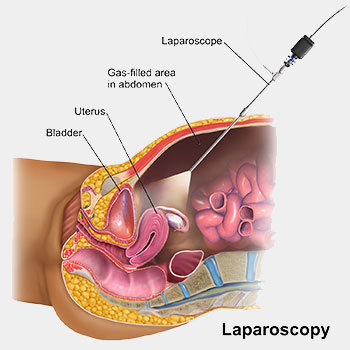Laparoscopy
Numerous PCOS patients, particularly those who are having difficulty getting pregnant, will undergo a laparoscopy. A laparoscopy is a procedure in which the patient is given a brief general anesthetic, a small cut in the umbilicus is made, and a telescope is inserted to examine the pelvic contents, which include the uterus, tubes, and ovaries.
PCOS ovaries appear to be ping-pong balls during laparoscopy. The ovary's white capsule thickens, and the ovary is frequently very rounded. Checks will also be performed during the laparoscopy to evaluate the health of the fallopian tubes and to look for any affiliated endometriosis.
Advantages of Laparoscopy:
Laparoscopy can assist a doctor in diagnosing a variety of fertility-related conditions, including:
- Endometriosis
- blocked fallopian tubes
- scar tissue buildup
- fibroids
- other reproductive system abnormalities
Procedure:
Anesthesia will be administered prior to the procedure, so the patient will not be awake or able to feel pain. After administering anesthesia, a surgeon will:
- Place a needle in the abdomen
- Inject gas into the abdomen to make the organs and structures easier to see.
- Remove the needle and insert a small camera on a laparoscope through a tiny incision.
- Cut a second incision and insert a small tool known as a probe.
The doctor will use the camera to examine the structures in the abdomen. The probe will be used to move or lift organs out of the way.
Other steps may be taken depending on what the doctor sees, such as:
- injecting dye into the fallopian tubes to determine whether they are open for sperm and eggs to pass through
- attempting to unclog obstructed fallopian tubes
- scar tissue or adhesion removal
- resolving irregularities
To perform these additional procedures, they may make a third incision in the abdomen and insert instruments.
Finally, the surgeon will remove the instruments and close the incisions.
A person will need to be monitored for a few hours to ensure that there are no complications and that recovery is proceeding smoothly.
Anyone who has had a laparoscopy should arrange for someone else to drive them home. In addition, they should have someone stay with them for up to 24 hours after surgery.

